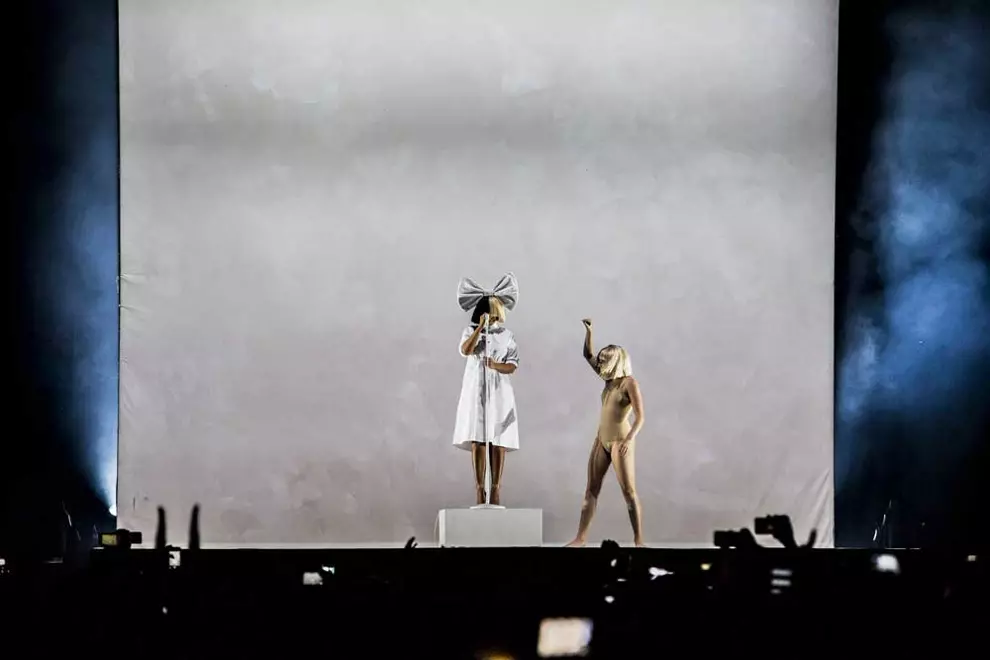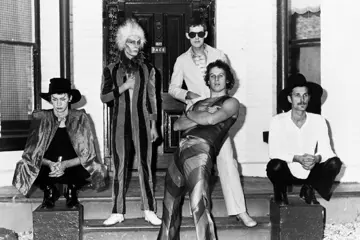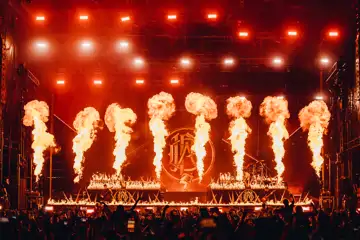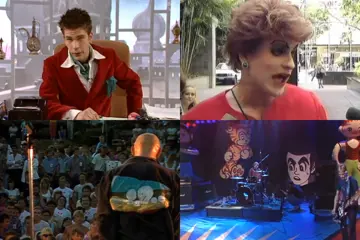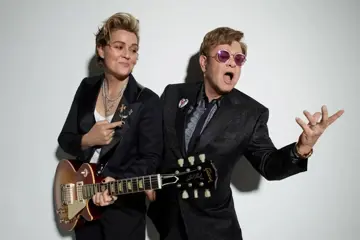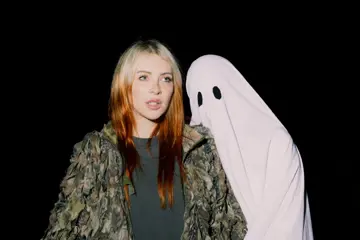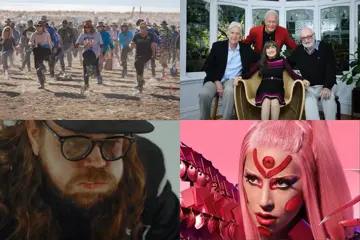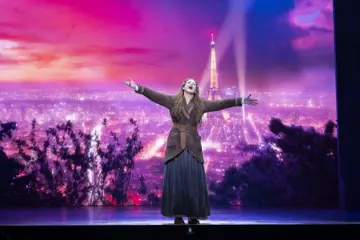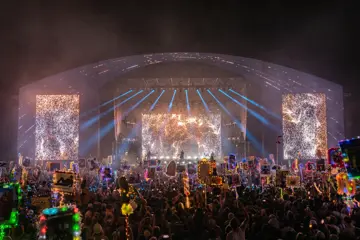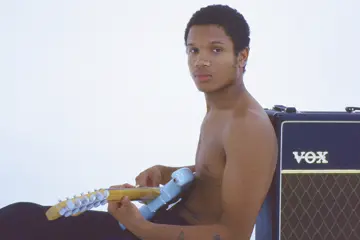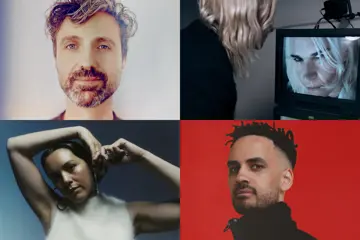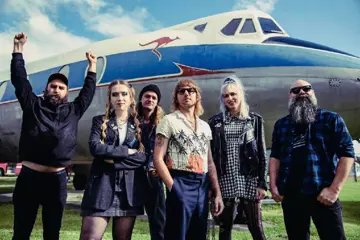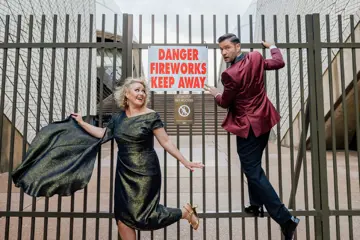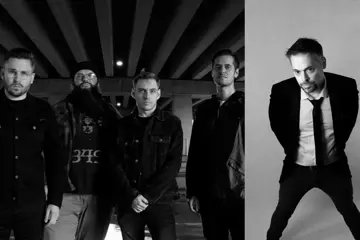 Sia
SiaThe words “Adelaide music” conjure up the usual suspects such as Cold Chisel, The Angels, The Masters Apprentices, Hilltop Hoods, I Killed The Prom Queen, Zoot, and The Twilights.
But the narrative changes when you look at the success stories that went on to find global highs.
The chart and financial triumphs of Sia Kate Isobelle Furler and music entrepreneur Robert Stigwood put them in the history books.
Adelaide, a UNESCO City of Music, has thanked the pair in different ways.
Sia Furler Lane is located off Hindley Street and Morphett Street near the Cargo Club, where the former Adelaide High student started her music career with the jazz fusion band Crisp.
The University of Adelaide set up the Sia Furler Institute of Contemporary Music and Media as a creative hub.
The Government’s Robert Stigwood Fellowship Program provides mentorship and professional development to musicians and entrepreneurs. He was also inducted into the SA Hall of Fame.
Here are seven of Adelaide’s greatest global success stories.
SIA
The Cargo Club showcased acts four or five times a week. They were exciting and musical, and serious fans and musicians would come and switch into the vibe.
Crisp came out of this community; some band members were students at the Conservatorium.
One day, in a café on Rundle Mall discussing plans for Crisp, the waitress came over and asked, “What are you guys talking about?”
When they told her, she laughed and said, “Oh, I’ll be your singer!”
Don't miss a beat with our FREE daily newsletter
As rapper Muskrat recalled, “We weren’t even thinking of singers at that stage.” But Sia arrived at the audition. It turned out many of the band’s fathers had played with hers, Phil Coulsen.
She made her presence felt, with a strong soul voice and a self-taught approach reflecting her free-spirit nature and ability to own the stage.
On her first night with them, she was so nervous that someone handed her a glass of wine. It was her first ever drink … and after that, she said, she drank every day for a long time.
Sia was unpredictable onstage, jumping off the stage to dance with the crowd or shoving a baby doll up her jumper to mark the “birth” of a new song. After Crisp’s split in 1997, she made a solo album, OnlySee, which sold 1,200 copies.
The next step was England, but only to travel. “I don’t know why I left Australia, really; I just wanted to go on an adventure. I never thought I would leave forever.”
But she broke into the London scene, and then moved to America, where her natural flair for writing songs and instinct for what acts worked for them made her a massive Adelaide export.
As of 2022, 15 Sia songs (for herself and others) made APRA AMCOS’ 1 Billion Club. During her March 2025 divorce from her second husband, it transpired that her personal fortune is US$30 million.
The billion-streamers included pop culture highpoints as Titanium (David Guetta), Diamonds (Rihanna), Chandelier (Sia), Wild Ones (Flo Rida), Pretty Hurts (Beyoncé), Flashlight (Jessie J), Chained To The Rhythm (Katy Perry) and Thunderclouds (LSD).
ROBERT STIGWOOD
For a 21-year-old to arrive in London with no plan but to travel around, it’s an understatement to say Robert Stigwood landed on his feet.
In the 1960s, he was among the first in British entertainment to juggle many roles rather than stick to one, as was the norm then, and became one of the biggest names.
He managed the Bee Gees and Eric Clapton/Cream, produced films such as Grease, Saturday Night Fever, Sgt. Pepper's Lonely Hearts Band (a flop), Tommy, Jesus Christ Superstar and Hair, as well as theatre productions.
He ran RSO Records (home of Clapton and his bands Blind Faith and Derek & The Dominoes) and owned the publishing of his films. The Saturday Night Fever and Grease soundtracks sold 80 million records. In 1978 alone, RSO sold $300 million worth of records.
Stigwood aspired to co-manage The Beatles and Small Faces. The Beatles thought him ruthless and threatened to record nothing but out-of-tune versions of God Save The Queen. The Small Faces’ manager Don Arden (Sharon Osbourne’s dad) came around with his thugs to Stigwood’s office and hung him upside down outside the balcony to inspire a change of plan.
By the time he died in 2016, he was worth $300 million. He never forgot his SA roots, raising millions of dollars for his old school. In 1981, the Mel Gibson-starring film Gallipoli, which he co-produced, was shot in SA.
BON SCOTT
Bon Scott was born in Scotland, grew up in Fremantle and was a singer with The Valentines in Melbourne. But it was in Adelaide where his rise to global success would begin.
In 1970, he was summoned to Adelaide by Hamish Henry, a young millionaire, entrepreneur and automobile dealer who managed the bands Fraternity, War Machine and Headband, and promoted the Myponga Festival in 1971.
Henry wanted Bon to front Fraternity, a prog-rock outfit touted as the next big thing. The sun-worshipping Scott lived up the hills, dressed as a hippie, and consumed magic mushrooms.
They released a couple of singles, including a version of Blackfeather’s Seasons Of Change, which went to Number One in Adelaide and Number 51 on the Go-Set national Top 60.
Fraternity had an ill-fated try at the UK market (the trip served as a honeymoon after Bon married Irene Thornton on January 24, 1972) and broke up in 1973.
While working in the fertiliser plant in Wallaroo, Bon did some recording and played 12 shows with The Mount Lofty Rangers.
But it was obvious he was, at 27, frustrated that plans to become a worldwide rock star had evaded him. At 11 pm on May 3, 1974, during rehearsals, a very drunk and highly emotional Scott had a fierce row with a member and roared off on a wet night on his Suzuki 550 motorbike.
He crashed into a Holden FC driven by 17-year-old Lee Morgan, heading to Port Adelaide with his mates. Scott hit the car with such ferocity that he went through the windscreen. He lost his teeth, broke his collarbone, slashed his neck and lay near death in a coma for three days of the 18 days at Queen Elizabeth Hospital.
Three years later, he sued Morgan for $20,000 for loss of his mobility on stage. It was handled by insurance. Ironically, Morgan had a photo of Bon and Fraternity on his bedroom wall.
As Scott recovered, he earned money driving visiting bands, one of which was AC/DC. He instantly bonded with the two Young brothers, who were very ambitious.
He told them he wanted to join. “I hope you sing better than you drive!” was Angus’s response.
In September 1974, AC/DC played Pooraka Hotel doing an instrumental set as they’d sacked first singer Dave Evans. Scott jumped on stage and ripped the place apart. A month later he was confirmed their new singer.
During Fraternity days, he’d kept a notebook of lyrics. The band told him they were rubbish. The Youngs, however, looked at them and marvelled, “This is magic, they’ll do us.”
LITTLE RIVER BAND
For all purposes, the idea of the Little River Band began in London and took shape in Melbourne when they started playing in March 1975.
Three of the founding members—Graeham Goble, Glenn Shorrock, and Beeb Birtles—started their music careers in the city of churches and moved to Melbourne to further their careers in respective bands.
As late as 2020, Goble maintained, “Absolutely, we’re an Adelaide band.” He was speaking to the Adelaide Advertiser, and went on to declare, “I still have a great love of Adelaide.”
LRB set the controls to the heart of US radio, backing it with strong songs and harmonies, leading Glenn Frey of The Eagles to acclaim them as the “best singing band in the world.”
It wasn’t an easy ride. About ten US record labels turned down their first album. One exec sniffed to manager Glenn Wheatley, it was like “fingernails screeching down a blackboard.”
But LRB went on to sell 30 million albums worldwide with some going multi platinum. Between 1977 and 1983, they frisbeed ten singles into the US Top 20. Six went into the Top 10, including Reminiscing (which in 2020 was certified for 5 million US radio airplay), Lady, Lonesome Loser and Cool Change.
They proved it was possible to have world success while based in Australia, albeit with hectic touring that frayed many relationships.
“I have to say that there is some disappointment that I ever left Adelaide, but once you have children, you become connected to other places,” Goble said in the Advertiser. “But I’d probably rather live in Adelaide than anywhere else in the world, it’s a fantastic place.”
Goble started out in local bands The Silence, Travis Wellington Hedge, Allison Gros and Mississippi. The latter had national hits with Kings Of The World and Will I.
When he first left for Melbourne, he discovered, to his horror, that it didn’t have his favourite snack foods, such as Arnott’s Yo-Yos, Big Sars, and Golden North ice cream. “Every three weeks or so, I would drive (back) to Adelaide, do my grocery shopping, and drive back again.”
Shorrock arrived on the good ship Orcades from the UK in 1954, aged 10, and the family settled in Elizabeth in 1958. His father, Harry Shorrock, worked at Weapons Research Establishment in Salisbury. At 18, he formed the harmony group The Checkmates and then The Twilights, which later became one of the biggest bands in Australia.
Beeb Birtles, born Gerard Bertelkamp in Amsterdam, Netherlands, arrived in 1959 on the MS Willem Ruys. While attending Plympton High School in Adelaide, he formed his first band, Times Unlimited, which became Down The Line, before joining Zoot, which took him to Melbourne.
TERRY BRITTEN
Manchester, UK-born Terry Britten was 12 when his family arrived in Adelaide. He had taught himself guitar and set about playing covers of British Invasion hits. One of these was The Twilights, who became a huge live drawcard.
When they moved to Melbourne, their record company, EMI, insisted they start writing their own songs. “I hated the idea of writing songs, I preferred playing Stones licks,” Britten said.
He helped write their hits, The Way They Play and Cathy Come Home.
After they split, he went to England, where he did sessions and played guitar for Cliff Richard. He played him a new song Devil Woman never dreaming Richard himself would want to record it. It was a smash in 1976, his first US Top 5.
After that, Richard recorded a dozen of his songs. Tina Turner did What’s Love Got To Do With It (which won him and co-writer Graham Lyle a Grammy) and We Don't Need Another Hero for Mad Max Beyond Thunderdome.
Britten and other collaborators wrote for hundreds of others including Michael Jackson (Just Good Friends from Bad), Lenny Kravitz (he rates Heaven Help as his favourite), Celine Dion, Wet Wet Wet, Status Quo, Olivia Newton-John, Meat Loaf, Melissa Manchester, Bonnie Raitt, Pointer Sisters and Dusty Springfield.
DOUG ASHDOWN
Singer-songwriter Doug Ashdown started his career in Adelaide in the late ‘60s and was inducted into the SA Music Hall of Fame for countless hits written for himself and others.
But his global perennial Winter In America was actually written about Sydney w,here he moved to focus on his career.
In the early ‘70s, he and his songwriting partner Jimmy Stewart were living in Nashville after getting a publishing deal there.
He recalls, “It was snowing in Nashville, and it never snows in Nashville. Around that time, some friends wanted brochures of Australia. When they came in the post, looking at the pictures made us both homesick for sunny Sydney, koalas and beaches, so the song came together.”
It was a hit in the Netherlands and Belgium, with hit versions by Dutch superstar Rene Froger, Marco Bakker and Gerard Cox in the 1980s, and in Dutch by The Kik (2014), titled December.
SISTER JANET MEAD
A rocked-up version of The Lord’s Prayer by a Catholic nun gave Adelaide its first-ever million seller single and Top 5 success in the US. The 1974 track had total sales of 2 million in 31 countries.
Sister Janet Mead studied piano at the Adelaide Conservatorium before joining the Sisters of Mercy order. In the early ‘70s, she participated in the Rock Mass movement, which used rock-themed music to draw younger fans.
At 17, she formed a rock band for rock masses she held at St Francis Xavier's Cathedral, and recorded tracks for schools and churches.
Festival Records flew her to Sydney to record a version of UK folk singer Donovan’s Brother Sun, Sister Moon. The company’s in-house producer, Martin Erdman, suggested the rocked-up The Lord’s Prayer for the B-side.
Its ensuing success (including a Grammy nomination) was uncomfortable for the nun. “I didn't like it in the spotlight.” She stopped doing publicity, turned down offers to tour America, and gave all her royalties to charity.
She spoke out against war and welfare cuts (“as a society we must strive for truth and compassion”) and was made South Australian of the Year in 2004 for decades of caring for the homeless. Among her many awards, she was inducted into the SA Music Hall of Fame in 2016, six years before she passed from cancer.

